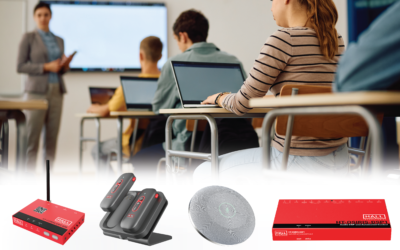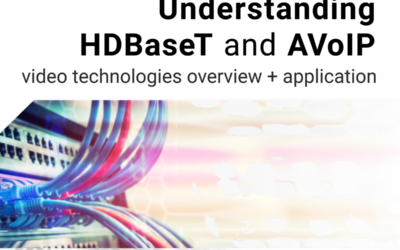It is safe to say that other than the healthcare sector no part of our economy has experienced more severe disruptions and challenges than education in general. Much has been written about closed schools, distance learning, social distancing, and the lack of student interaction. Of course, the big question as the pandemic subsides is whether we will go back to “normal”. The best response is that no we will not go back to the “old normal” but there will be a “new normal” especially in education resources and technologies and how they will be used. Rather than restate the obvious of how these things have negatively affected so many of us (i.e., students, parents, teachers, administrators, etc.), let us look at the near term and the things to learn about and that we will encounter.
In researching the article, we found numerous blogs and articles by several subject matter experts who had varying opinions on what was to come. Taking all this into account we then visited EDUCAUSE our source for all things education technology related to see what they had to say. For those who are not familiar with EDUCAUSE you should be, so let me explain. EDUCAUSE is a non-profit organization dedicated to helping those who lead, manage, and use information technology to “shape strategic decisions at every level. EDUCAUSE actively engages globally with colleges and universities, corporations, foundations, government, and other nonprofit organizations to further the mission of transforming higher education using information technology.” The best part of what EDUCAUSE does is that it is data-driven with primary research. It is global in scale and scope looking at education technology around the world. In the comparison of all the notes taken, here is what we found of primary interest with roots in technology.
Under the heading of the “new normal” students are already returning to the classroom but remote modes of learning will continue and, in many cases, increase post-pandemic. There has been widespread adoption of hybrid and blended learning models, and this is going to increase. In fact, research shows that in higher education, on-campus classes and activities will decline from their peak as remote learning increases. The takeaway is that it is not going to be either/or, rather it will be and.
Understanding that this technological evolution to hybrid learning is not going away, one of the biggest obstacles we face is a digital gap in access to IT-related technologies. It boils down to the haves and the have nots. Some have access to the best hardware and digital networks and sad to say others (read that too many) are not so lucky. Today there is not a level playing field and this is certainly not acceptable at any level. For example, in the Los Angeles school system, one in four households lack essential network access. The good news is that this presents opportunities to improve the status quo and provide these capabilities. The pandemic and the adoption of the hybrid learning model has put a clear and present focus on technologies both in-class and remote. Research shows that 83% of higher education IT leaders are making the use of digital instructional tools a top priority.
One of the trends that is driving this expansion is IoT or the internet of things. For those who might want a Cliffs Notes version of IoT it fundamentally works as follows: Most newer hardware devices have sensors built in that collect data. The collected data can then be shared via the cloud and integrated with software. The software then analyzes and transmits the data to users via an app or website. This adds a level of digital intelligence to devices enabling them to communicate real-time data without a human being involved, effectively merging the digital and physical worlds. It is then up to the users how to manage what has come to be known as big data.
Big data is the fuel that is powering nearly everything we do. Overall big data is an umbrella term referring to the analyses and extraction of information via data sets that are too large or complex to be dealt with by traditional data-processing application software. The most common use of big data is for predictive analytics. This refers to the practice of extracting information from existing data sets to determine patterns (including human behavior) and predict future events and trends. Big data is like drinking from a fire hose. The question is what to do with it. This leads us to analytics or in this case learning analytics.
The big data comes from the students registering, attending classes (on campus or remote), taking tests, and giving feedback. The educational institution then has the capability to look at the data, analyze it, “take the temperature”, and monitor a diverse population of students. This provides performance levels of students, their rate of learning, roadblocks, and even the efficacy of a specific class and then course and curriculum planning. To paraphrase the old MBA phrase, if you can measure it you can manage it.
An educational institution looks at the data and decides what to do with it. Artificial intelligence (AI) helps automate the process. One definition of AI is that artificial intelligence is the science of training computer systems to emulate human tasks through learning and automation. The key elements here are that an AI system requires learning, and only once it has been taught can it automate or replicate what it has ingested. In education, this can be a learning management system, grading and assessment tools, student databases, mobile apps, etc. As data comes in the AI system knows what to do with it.
One significant trend we are seeing is online education resources or OER. These are learning and teaching materials that are shared online and for everyone openly. They are the learning material and teaching that is available either under open licensing or in the public domain. All the open educational resources are created and contributed by curriculum designers, educators, school districts and curriculum partners. As one expert pointed out, “Moreover, all of them are ‘mashable’ which indicates that teacher can easily choose resources (for example, animations, videos, lesson plans, photos etc.), combine them or tweak them with some other resources, to develop their personal custom teaching tools. Not to mention, a lot of OERs are already mapped to standards.”
This material can be used for many purposes which may include translating, reusing, or maybe modifying because the creator of contents has already granted the permission to do so via open licensing. OER helps in personalizing the overall learning experience. In addition, it also helps students to learn according to their own pace and to have quick access to all the latest information.
What we are seeing is evolution beyond the teacher and student in a traditional classroom with a textbook and whiteboard. Does this still exist, and will it continue to exist? The answer is yes and yes but as Bob Dylan says, “the times they are a changing.” With mobile devices, video conferencing, expanded networks, and cloud storage coupled with a more diverse and dispersed student population, change is inevitable. Students want and increasingly demand access to educational materials anytime, anywhere, and on any device. Educational institutions are in the process of making this their new reality. The good news is that the sky is the limit. Literally.




